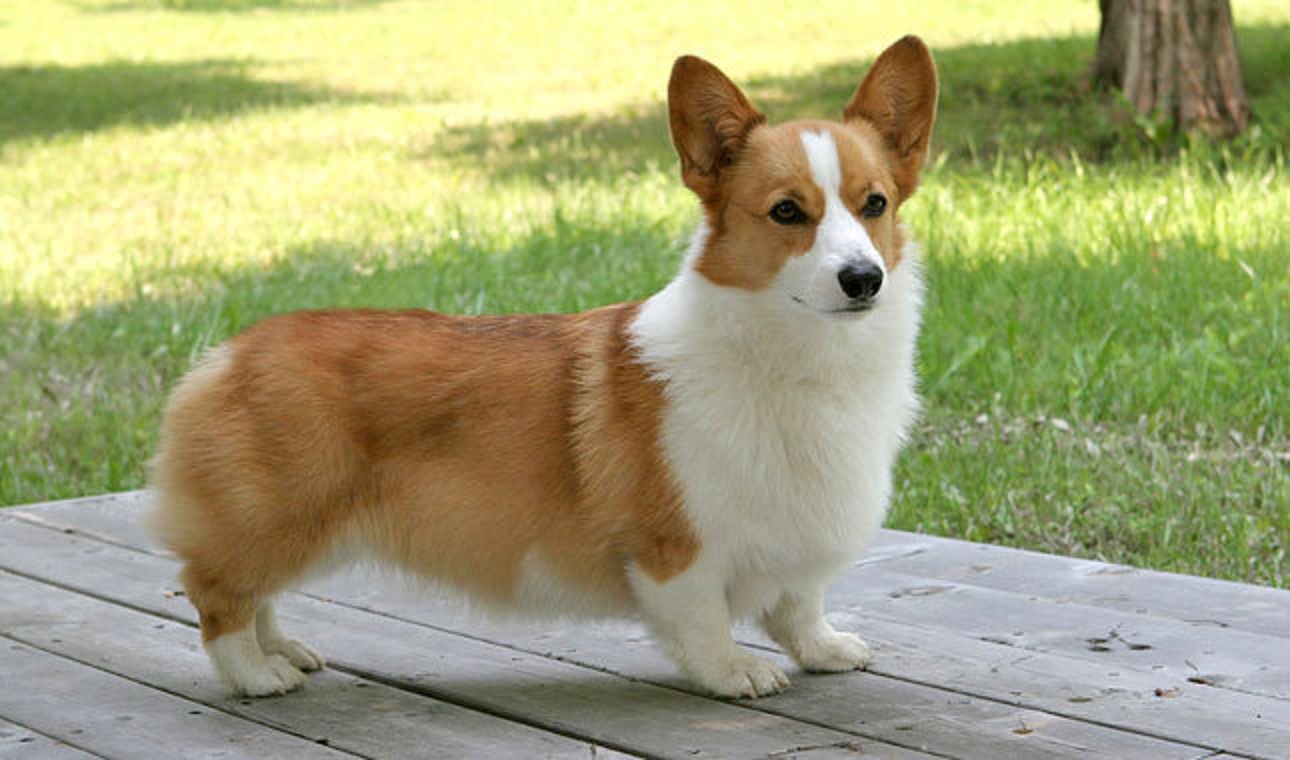
Pembroke Welsh Corgi

Navigate through the tabs
Navigate through the tabs below to view the breed's info of your interest.
The breed's info is divided in four sections; namely:
the breed's history ,
the breed's main stats ,
the dog's potential health issues
and finally, how the breed scored in 26 different categories.
All the above information should give you a respectively good overview for the dog of your interest.
Dog Breed's Main Info
The Breed's History:
The Pembroke Welsh Corgi lineage has been traced back as far as 1107 AD. It is said that the Vikings and Flemish weavers brought the dogs with them as they traveled to reside in Wales.
As far back as the 10th century, Corgis were herding sheep, geese, ducks, horses and cattle as one of the oldest herding breed of dogs.
Pembroke Welsh Corgis are closely related to Schipperkes, Keeshonds, Pomeranians, Samoyeds, Chow Chows, Norwegian Elkhounds and Finnish Spitz. Pembrokes and Cardigans first appeared together in 1925 when they were shown under the rules of The Kennel Club in Britain. The Corgi Club was founded in December, 1925 in Carmarthen, Carmarthenshire.
It is reported that the local members favored the Pembroke breed, so a club for Cardigan enthusiasts was founded a year or so later.
Both groups have worked hard to ensure the appearance and type of breed are standardized through careful selective breeding. Pembrokes and Cardigans were officially recognized by the Kennel Club in 1928 and were initially categorized together under the single heading of Welsh Corgis, before the two breeds were recognized as separate and distinct in 1934.
Pembroke Welsh Corgis are becoming more popular in the United States and rank 24th in American Kennel Club registrations, as of 2012.
Country of Origin:
Wales
Breed Group:
Herding
Height:
10 inches to 1 foot (25,4 to 30,48 cm)
Weight:
Up to 30 pounds (13,61 Kg)
Life Span:
12 to 14 years
Potential Health Issues:
Cataracts,
Hip Dysplasia,
Cutaneous Asthenia,
Cystinuria,
Degenerative Myelopathy (DM),
Epilepsy,
Intervertebral Disk Disease,
Patent Ductus Arteriosus (PDA) with Pulmonary Hypertension,
Progressive Retinal Atrophy (PRA),
Retinal Dysplasia,
Von Willebrand's Disease
Adaptability
Apartment Living:
First Time Owners:
Sensitivity:
Being Alone:
Cold Weather:
Hot Weather:
Friendliness
Affection With Family:
With Kids:
With Dogs:
With Strangers:
Health and Grooming
Shedding:
Drooling:
Easy To Groom:
Overall Health:
Weight Gain Potential:
Size:
Training
Easiness:
Intelligence:
Mouthiness:
Prey Drive:
Barking or Howling:
Wanderlust:
Need For Exercise
Energy Level:
Intensity:
Exercise Needs:
Playfulness:
Our Mobile Application
Check out Our Mobile Application "Dog Breeds Central"
